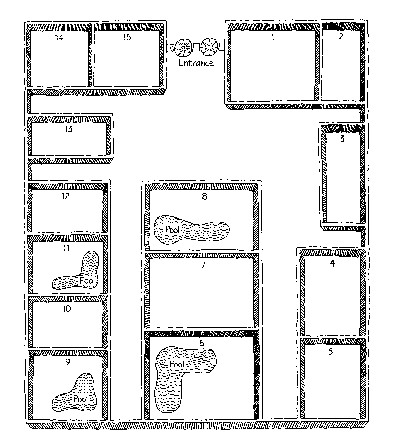
Home About Robert CV The Good Lord Willing and the Creek Don't Rise: Pentimento Memories of Mom and Me Novels Reviews ESL Papers (can be viewed online by clicking on titles) The Many Roads to Japan (free online version for ESL/EFL teachers and students) Contact     |
Robert W. Norris 1997. In Bulletin of Fukuoka Women's Junior College Vol. 52: 9-23 Introduction
In the first paper (Norris, 1996) of this two-part series, the premise was made that English discussion skills can be taught to lower-level students at Japanese colleges and universities. This premise was based on an understanding of Japanese communicative style, an awareness of current Communicative Language Teaching (CLT) research, and a systematic approach to planning and carrying out lessons that introduce discussion skills to students. The approach itself is based in part on Littlewood's (1981, 1992) methodological framework for teaching oral communication, and incorporates the direct approach to CLT, which is seen as well suited to the type of learning background most Japanese students bring to college and university conversation classes1. The approach involves four stages2: (1) introduction and practice of useful English expressions that signal turn-taking, encouraging, clarification requests, confirmation, and other functions relevant to discussion; (2) brainstorming of vocabulary and practice of grammatical patterns commonly found in the exchange of opinions, agreement, and disagreement; (3) short, cued dialogues that involve students in exchanges of opinion, agreement, and disagreement; and (4) longer, cued dialogues that lead students toward weighing both sides of a topic and learning simple ways of compromising. This paper presents some detailed lesson plans and classroom procedures for each of the four stages. In some cases, it may take several weeks to move from Stage 1 to Stage 4. In other cases, the four stages can occur from beginning to end in a single lesson. The important thing is for the teacher to show a lot of patience in guiding the students toward becoming accustomed to the rhythm and flow of English discussion and gaining confidence in expressing themselves. Incorporating Useful
English Expressions
In the first class of a new semester the teacher hands out a list of useful expressions for the students to use in their conversations and discussions. The students should bring this list to every class and every time they learn a new expression they should add it to the list. For the first few weeks they should be allowed to refer to the list any time they want. The list should include simple expressions for encouraging, hesitating, turn-taking, requesting clarification or repetition, etc. The following list is an example:
Vocabulary
Brainstorming and Pattern Practice Review
1. The Yuppie Game3: This game is useful for the practice of comparing things. Put the students in groups and have them brainstorm a list of adjectives that describe people, things, and animals. Put the list on the board. If the students have trouble coming up with vocabulary, the teacher can add his own to the list. Review the general rule for forming the comparative and superlative forms of adjectives: add -er and (the) -est to one-syllable adjectives; use more and the most with adjectives of three or more syllables; use more and the most with two-syllable adjectives that do not end with -y, but add -er and (the) -est to two-syllable adjectives that end in -y. Hand out a set of about 25 cards or pictures of people, things, and animals to each group. Ask the students to shuffle the cards and deal them out equally to each player. The first player picks a card, lays it on the table, and makes a statement about the card. For example, "My house cost $1 million." The next player chooses a card, lays it down next to the first player's card, and makes a comparison. For example, "My car is more expensive than your house." The third player picks a card, lays it down next to the second player's card, and makes a comparison. For example, "My husband is more charming than your car." Adjectives cannot be used more than once. Nonsense comparisons like "My house is more intelligent than your car" are not allowed. If a player cannot think of a comparison within one minute, the turn passes to the next player. The first player to get rid of all her cards is the winner. 2. Animal Comparisons4: For this game you need a set of 25-30 cards or pictures of different animals for each group of three to five students. The groups are given about ten minutes to brainstorm as many adjectives that describe animals as they can. Usually the students come up with the most obvious ones like big, small, cute, fast, etc. The teacher can add his own list on the blackboard. By adding adjectives like endangered, furry, man-eating, ferocious, etc. new vocabulary can be taught. Before starting the game, all the adjectives and names of the animals should be reviewed. After reviewing the vocabulary, hand out the animal cards to the groups and write these patterns on the board: "They are both ." "One is (...). The other is (...)." "Neither is (...)." The cards are placed face down in the middle of each group. Student 1 picks up the top two cards. She places one card face up where the other students can see it, but does not show the other card. Student 1 compares the two animals on the cards by using the adjectives the class has reviewed. For example, if Student 1 picks up a monkey card and an owl card, she might say, "They are both wild. They are both smart. One is furry. The other is feathered. Neither is slow or stupid." She continues to make comparisons until another student guesses the hidden card. The student who guesses correctly chooses the next two cards. The game continues until all cards have been chosen. 3. I Would Like to be a (...)5: The same cards used in the Animal Comparison game are used in this game, too. The teacher first reviews the second conditional pattern (If + subject + past tense, subject + would/could + verb). Next, the teacher puts this cued dialogue on the board: A: "I'd like to be a
(...)."
C/D/E: "Why?" A: Reason + "How about you?" (said to student B) B: "I wouldn't like to be a (...)." C/D/E: "Why?" B: Reason + "Wouldn't you agree?" (said to students C, D, & E) C: "I agree with (A or B)." D: "I agree with (A or B)." E: "I agree with (A or B). (A or B) wins. Let's go to the next one." After the winner is decided, the students rotate roles. Student B becomes A, C becomes B, and so on. Another card is turned up and the game proceeds as before. When all the cards have been turned up, the student with the most cards is declared the overall winner. The students should be encouraged to use the second conditional or adjectives used in the Animal Comparison game when explaining their reasons. A time limit can also be used to speed up the game. For example, if the students cannot think of a reason within one minute, they automatically lose. 4. Around-the-World Trip6: Have students imagine they are all very rich and have just come back from a one-year trip and are now at a party. They are going to interview one another about the trip. Tell them they have 10 minutes to brainstorm as many past-tense, yes/no questions as they can about someone's trip. For example, "Did you go to London?" "Did you get there by ship?" "Did you speak English?" "Did you buy any clothes?" etc. Walk around and give help where needed. Stop the brainstorming session. Tell the students that everyone is going to answer "no" to all the questions. Give the students another 10 or 15 minutes to write down information questions to go with the yes/no questions. For example, "Where did you go?" for "Did you go to London?" and "How did you get there?" for "Did you get there by boat?" Again, walk around giving help where needed. When enough questions have been written down, review the past tense forms for irregular verbs; for example, buy-bought, get-got, see-saw, etc. Then put this cued dialogue on the board: A: Past-tense, yes/no
question.
B: "No, I didn't." A: Past-tense information question. B: Free answer + "How about you?" + past-tense, yes/no question This activity can be extended to having the students give reports to other students about the conversations they have just had. A review of the forms needed for reported speech can be done prior to having the students give their reports. An alternative would be to assign the report as homework. 5. When Was the Last Time You Went Skiing7?: This game gives practice in asking and answering questions about the past. The teacher prepares two sets of 24 cards for each group of four. One set contains such time expressions describing the past as "the day before yesterday," "last weekend," "this morning," "ten years ago," etc. The other set contains pictures that either imply or depict common activities such as drinking coffee, dancing, watching television, riding a train, etc. The teacher puts the following cued dialogue on the board: A: "When was the last time
you [past tense]?"
B: "The last time I [past tense] was + [time expression]." C: Challenge question. B: Answer D: Challenge question B: Answer A: Challenge question B: Answer + "May I throw away my card?" A/C/D: "Yes, you answered well." or "Sorry, I don't accept your answers." The student on her right must answer using one of her time cards. For example, she chooses the most appropriate time card, places it in front of the other students, and says, "The last time I watched television was last night." Each of the other students asks a challenge question to which Student B must make up an answer. It is a good idea to have a one-minute time limit for each answer. If Student B cannot answer any of the questions within one minute, she must keep the time card. If two of the three other students accept her answers, she can throw away the card. If two of the three don't accept her answers, she must keep the card. When this exchange is finished, Student B picks a picture card and asks Student C a "When was the last time you" question. The game continues until one student gets rid of all her time cards. In order to make the game more lively and interesting, it is a good idea to encourage the students to be creative with their questions. For example, instead of the obvious "When was the last time you watched TV?" when the television picture is turned up, students can be told to ask more detailed questions such as "When was the last time you watched a romantic movie on TV?" or "When was the last time you watched a baseball game on TV?" Opinions, Agreement,
and Disagreement
After several lessons of vocabulary brainstorming, pattern practice related to discussions, and incorporating useful English expressions into simple exchanges, a series of lessons introducing discussion skills is carried out. The first part is learning how to express opinions, how to agree, and how to disagree. The teacher writes the following on the board: Expressing Opinions8 I think + (opinion)
[moderate conviction]
I feel that + (opinion) It seems to me + (opinion) In my opinion, + (opinion) If you ask me, + (opinion) No doubt about it, + (opinion) [strong conviction] That may be. [weak]
I agree. I agree completely. I couldn't agree more. [strong] Do you think so? [weak;
polite]
I'm not so sure about that. I wouldn't agree. I can't agree at all. [strong] T : "If you ask me, Ichiro
is the best baseball player in Japan."
S1: "I'm not so sure about that." T : "It seems to me Kyushu
ramen is better than Kansai ramen."
S2: "I couldn't agree more." The next step is to expand the exchanges to four lines. Write on the board: A:
[opinion expression] + [opinion]
B: "Why?" A: "Because + [reason] + [signal (e.g., How about you?)]" B: Agree (then say, "Let's go to the next one.") or Disagree (then return to Line 1) A: "If
you ask me, Ichiro is the best baseball player in
Japan."
B: "Why do you think so?" A: "Because he was number one in batting average and hits, and he is the best outfielder. How about you?" B: "I agree completely. Let's go to the next one." A: "If you ask me, Ichiro
is the best baseball player in Japan."
B: "Why do you think so?" A: "Because he was number one in batting average and hits, and he is the best outfielder. How about you?" B: "I wouldn't agree. (returns to line 1) In my opinion, Ochiai is the best player." A: "Why do you think so?" B: "Because he hits more home runs and has been an all-star longer." The number of topics and activities that can be practiced using these simple cued dialogues is practically unlimited. "Odd Man Out9," ranking exercises, and scrambled picture stories are just a few activities that lend themselves to exchanges of opinions. Before asking the students to move into extended versions of cued dialogues, it is best to teach a few expressions for compromising (e.g., "I didn't think of that." "That's a good idea." "I give up. You win." "OK, You've convinced me." etc.). Demonstrate one speaker's reason being better than yours and how to compromise. For example, in "Odd Man Out" (using a group of animals--horse, mouse, cow, camel, cat, dog) the following compromise could be made: A: "I think the horse
should be the odd man out."
B: "Why?" A: "Because it is the only one that cowboys ride. How about you?" B: "I can't agree. In my opinion, the camel should be the odd man out." A: "Why do you think so?" B: "Because the camel is the only one that lives in the desert and has humps. Wouldn't you agree?" A: "I didn't think of that. You're right. That's a good idea. Let's go to the next one." A: "[opinion expression] +
picture number should be the first picture."
The Zoo Plan10
After having done a few lessons involving extended dialogues and compromising, I usually finish the introduction of discussion skills unit with two or three classes that have the students create a zoo plan. The students are told they are the managers of a zoo that has 15 cages of varying sizes. Four of the cages have pools. The teacher calls on individual students to brainstorm animals for each of the 15 cages--11 cages for land animals and four for water animals. As different students choose what kind of animals they want in the zoo, the teacher also asks how many of each kind of animal they want. The resulting list may look something like this:
Water
A: [opinion expression]
+ "the (...)s should be put in cage number (...)."
B: "Why do you think so?" A: [reason] + [signal] B: Agree (then say, "Let's go to the next one.") or Disagree (then return to line 1) An example can be given by pointing out that cage number one is large and near the entrance, while elephants are also large and popular. The cage and the animal are suited to each other because elephants need a large space and attract more customers by being placed near the entrance. Students often use reasons that take into consideration the characteristics of only one of the two. Also, the teacher can add more useful expressions for either disagreeing or agreeing partially at this stage. I normally use "That may be true, but..." and "I see your point, but..." and demonstrate how the students should add their own opinion after the expression. Students now begin the task. The teacher can walk around helping with vocabulary, prodding the students to use as many previously learned expressions as they can in reacting to each other, and playing the devil's advocate. I allow the students to use their notes to refer to when they have a chance to hesitate, ask for repetition, encourage their partner, express disagreement, etc. After a few cages have been decided upon, the students can be asked to put their notes away and try to use the same expressions from memory. Some pairs may finish the zoo plan quickly because they tend to agree easily, but others will spend more time in working out their plan. While some pairs are still trying to compromise, the teacher can tell the early finishers to start writing down the reasons for their cage choices. That makes it easy for the teacher to determine what areas need more work and to give individual attention. The following is an example of a compromise that might be made at this stage: A: "In my opinion, the
hippos should be put in cage number eight."
B: "Why do you think so?" A: "Because hippos are big animals and need a large pool. Cage number eight has the largest pool. Wouldn't you agree?" B: "I see your point, but it seems to me the dolphins should be put in cage number eight." A: "Why?" B: "Because there are only two hippos and they donŐt move much. There are five dolphins and they swim around a lot and need more space than hippos do. What do you think?" A: "I didn't think of that before. You're right. Let's go to the next cage." When nearly all the groups have compromised on a plan, secretaries from each group can be asked to write the results on the board so each group can compare its plan with the other plans. If time permits, a reporter from each group can be asked to explain the reasons for the group's choices. Conclusion
The lesson plans presented in this paper are concerned mainly with helping students link language forms with (a) communicative functions and (b) specific functional meanings, as well as helping them relate language to the social meanings that it carries and use it as a vehicle for social interaction. In Littlewood's (1981, 1992) methodological framework for teaching oral communication, both "conscious learning" and "natural acquisition" can and should be integrated into classroom learning. Littlewood's (1992) framework provides learners "both with 'part-skill practice,' in which individual components of communicative ability are isolated and practised separately, and with 'whole-task practice,' in which these components are integrated in communication." This framework is similar to Dornyei and Thurrell's (1994) interpretation of the direct approach to CLT, which, as mentioned in the previous paper (Norris, 1996), is well suited to the type of learning background most Japanese students bring with them to college and university conversation classrooms. In terms of taking into consideration Japanese communicative style characteristics, particularly those of group-mindedness and formalized speechmaking11, the useful English expressions list and the form-focused, cued dialogues in the activities help create an environment in which the students are able to engage themselves without constraint. Littlewood (1992: 98) believes this kind of classroom environment is the most important condition for learning.
Given the limited number of times students and teachers in college and university conversation classes meet in a school year, the goal of the type of activities and instruction discussed in this paper should not be to produce students capable of participating in debates and discussions beyond their capabilities. The focus should be on helping students with the "part-skills" of communication. Teachers should be trying to enable the students to acquire linguistic forms and relate the forms to communicative functions and social context. The aim should be directed at equipping the students with enough basic communicative competence, control over grammar and vocabulary, and confidence to become more proficient in the future. The activities in this paper have been presented in a sequence that takes the students from a review of forms they have learned before to a stage where they can develop a moderate degree of independence and participate in meaningful interaction. There is, however, no set formula to determine the teacherŐs selection of activities. Each class is different with different needs and abilities. Littlewood (1992: 94-95) elaborates:
NOTES
1. See Hyland (1994: 55-74) 2. The four stages listed differ slightly from what appeared in the previous paper (Norris, 1996: 27), where they appeared as: "(1) initial practice of grammatical patterns commonly found in the expression of opinions, agreement, and disagreement; (2) introduction of expressions that signal turn-taking and show the speaker is finished for the moment (also demonstration of how this contrasts with the Japanese aizuchi characteristic); (3) short, cued dialogues that recycle (1) and (2) and involve the students in simple exchanges of opinion, agreement, and disagreement; and (4) longer, cued dialogues that recycle (1), (2), and (3) and lead students toward weighing both sides of a topic and learning simple ways of compromising." 3. The idea for "The Yuppie Game" comes from Hadfield (1990: xxii). 4. The idea for "Animal Comparisons" comes from Tom and McKay (1991: 59). 5. The idea for "I Would Like to be a (...)" comes from Tom and McKay (1991: 63). 6. The idea for "Around-the-World Trip" comes from Molinsky and Bliss (1989:19-21). 7. The idea for "When was the Last Time You Went Skiing?" comes from Hadfield (1990: xx). 8. The lists for "Expressing Opinions," "Agreement," and "Disagreement" come from Seido Language Institute (1982:12-13). 9. The idea for "Odd Man Out" comes from Ur (1981: 48-49). 10. The idea for "Zoo Plan" comes from Ur (1981: 81-83) 11. See Anderson (1993: 101-110). REFERENCES
Anderson, F. E. 1993. The enigma of the college classroom: Nails that don't stick up. In P. Wadden (Ed.), A Handbook for Teaching English at Japanese Colleges and Universities (pp. 101-110). Oxford: Oxford University Press. Dornyei, Z. & Thurrell, S. 1994. Teaching conversational skills intensively: Course content and rationale. ELT Journal 48(1): 40-49. Hadfield, J. 1990. Intermediate Communication Games: A Collection of Games and Activities for Low to Mid-Intermediate Students of English. Hong Kong: Thomas Nelson and Sons Ltd. Hyland, K. 1994. The learning styles of Japanese students. JALT Journal 16(1): 55-74. Littlewood, W. 1981. Communicative Language Teaching: An Introduction. Cambridge: Cambridge University Press. Littlewood, W. 1992. Teaching Oral Communication: A Methodological Framework. Oxford: Blackwell Publishers. Molinsky, S. J. & Bliss, B. 1989. Side by Side, Book 3. Second edition Englewood Cliffs, New Jersey: Prentice-Hall, Inc. Norris, R. W. 1996. Introducing discussion skills to lower-level students: Can it be done? Bulletin of Fukuoka Women's Junior College 51 (June issue): 21-32. Seido Language Institute. 1982. Modern English Cycle Two, Book 8, Discussions. Japan: Seido Foundation. Tom, A. & McKay, H. 1991. The Card Book: Interactive Games and Activities for Language Learners. Englewood Cliffs, New Jersey: Prentice-Hall, Inc. Ur, P. 1981. Discussions That Work: Task-Centred Fluency Practice. Cambridge: Cambridge University Press. APPENDIX - ZOO PLAN
Copyright (c) 1997-2021 Robert W. Norris. All Rights Reserved |
